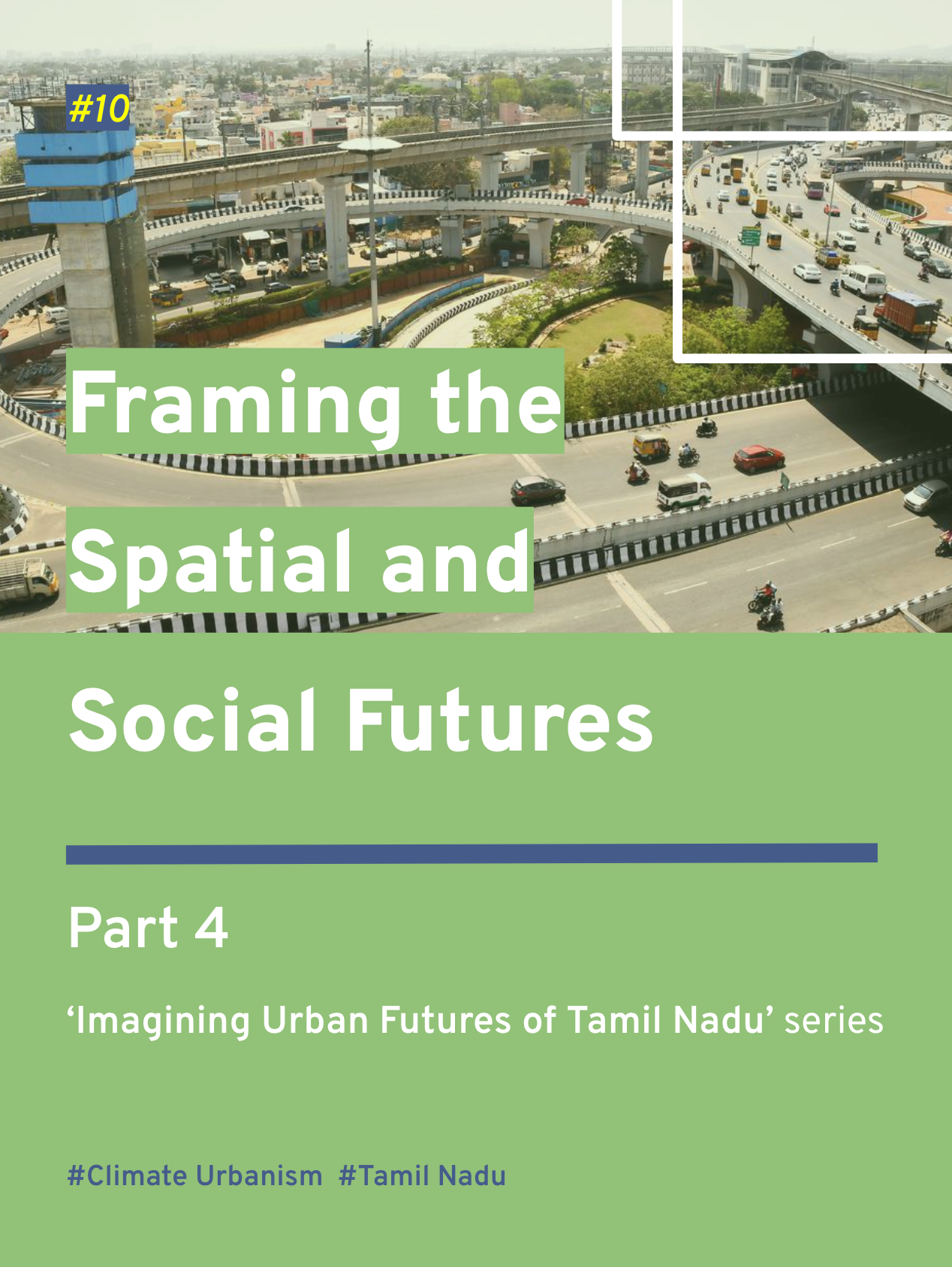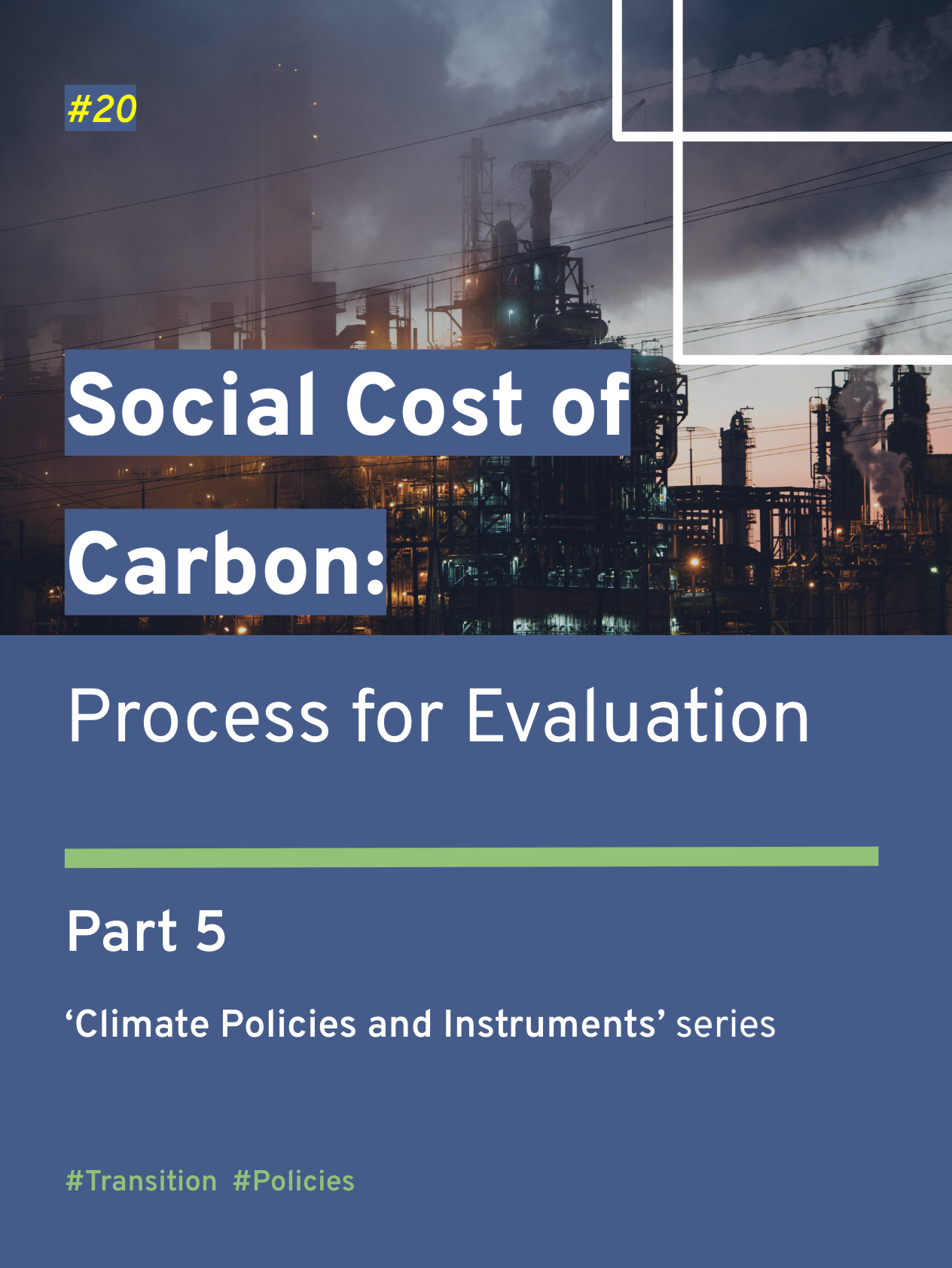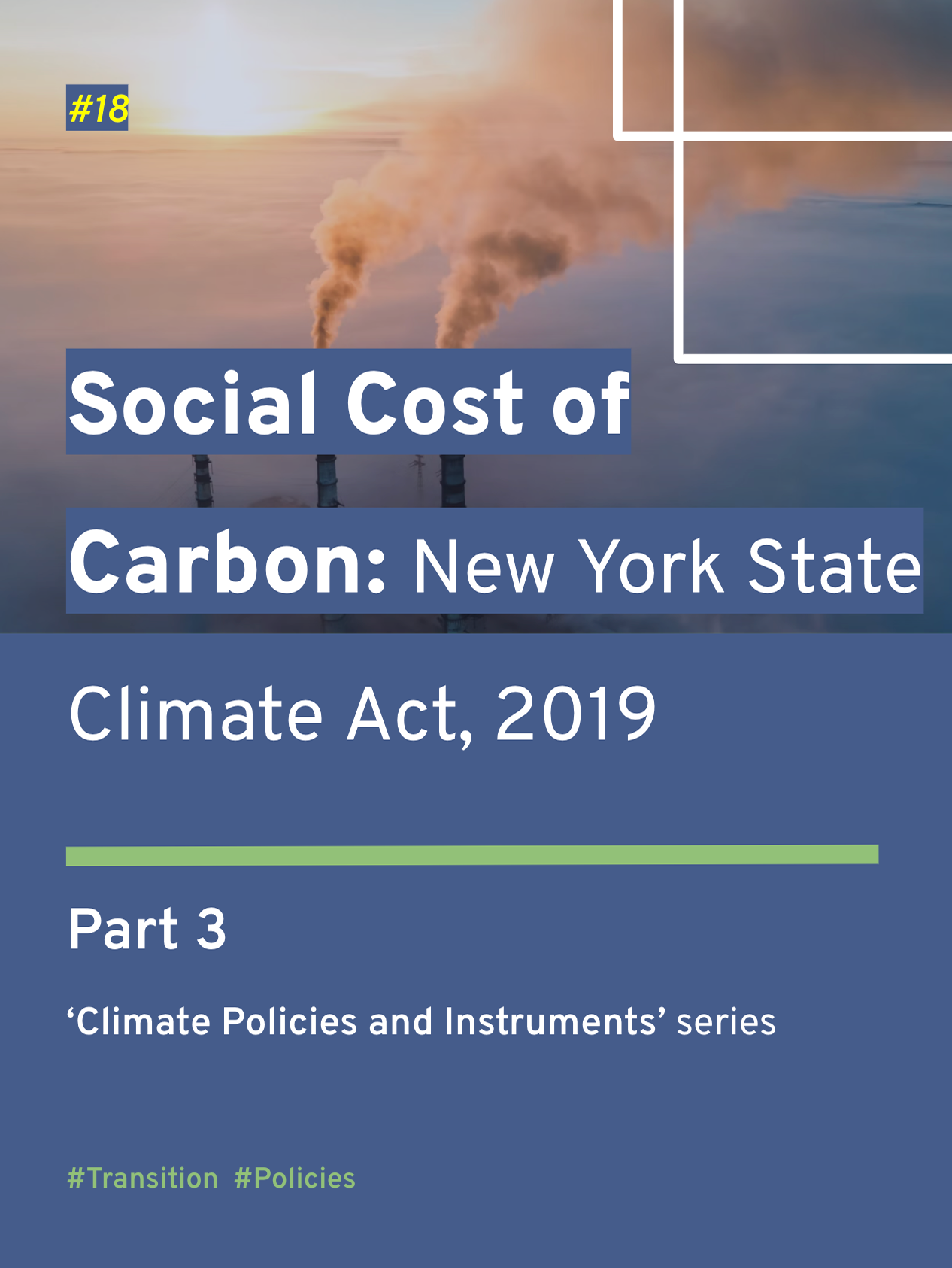Part 4 of ‘Climate Policies and Instruments’ series
Image showing a row of cars with tailpipe emissions (Source: Corporate Knights)
Blog 18, introduced the Social Cost of Carbon (SCC) as a concept and situated it in the context of implementing the New York State Climate Act, 2019. This blog discusses the approach to and process for evaluating SCC.
Putting a price tag on carbon emissions is a huge task. Where do we start?
Damages-based vs. Abatement-based Valuation
The ‘value of carbon’ can be determined either through a marginal damages-based approach, which estimates the impact of climate change as the net cost of societal damages, or a marginal abatement cost-based (MAC) approach, which takes into account “the cost of reducing the last metric tonne of carbon dioxide needed to meet a region’s or society’s emissions target”.
For the sake of simplicity, let’s assume there is a kid who plays with a lot of toys and creates a mess at home. To tackle this behaviour, from a marginal damages-based approach, the kid’s parents may say that “for every toy the kid drops on the floor, they have to do a chore at home”—basically, making the polluter pay for the mess they create. Whereas, if the parents decide to follow a marginal abatement cost-based (MAC) approach, the kid will have a restriction on the number of toys to play with and/or drop on the floor, based on the cleanliness target for the house and other contextual variables—curtailing the polluter's action. The only difference to note here is that a kid’s action is likely to be unintentional or accidental; however, in the real world, we have conscious and rational polluters.
While the US federal government and countries like Canada and Mexico follow the marginal damages-based approach, multiple European countries, including the United Kingdom (UK), France, and Ireland, have adopted the MAC approach.
The primary recommendations from the ‘Establishing a Value of Carbon: Guidelines for Use by State Agencies’ (EVC Guidelines), published by NY, in August 2023, align with the federal government’s proposal by endorsing the damages-based valuation approach with the SCC metric for measurement, while offering freedom for the state agencies to explore other approaches, as appropriate, based on sectors and projects. This framework ensures that a set of values (in the form of SCC) capturing the global impact, is available for direct, near-term application in Cost-Benefit Analyses (CBAs) of climate policies, besides encouraging research and innovation to inform future revisions to the guidelines. However, experts recommend that a slow shift to the MAC approach could be useful for NY in the long run.
MAC approach for New York
The general review of the MAC approach, as presented in the EVC Guidelines, resonates with Marsters and Kaufman’s suggestion for an iterative, target-consistent approach to estimate the value of carbon that accounts for emerging technological options, especially in regions with statutory emissions reduction targets, like the NY Climate Act. For instance, the authors suggested $52 and $93 per metric tonne (in 2018 U.S. dollars) as the SCC for the USA, to achieve net zero by 2050 and 2040 respectively, given that the implementation starts in 2025. This is close to the $53.43 value recommended by the New York State (in 2020 U.S. dollars) for the 2050 net zero target.
The MAC approach would be especially favourable for NY’s power sector, owing to the availability of detailed data through the renewable energy credit (REC) market. This avenue, to consistently review the real-world cost signals, would also be a long-term opportunity to regularly update the MAC curve that represents the cost and abatement potential of various mitigation options. While the MAC curve could also be pursued for transport, buildings, industries, and other sectors with non-combustion GHG categories (landfills, agriculture, etc.), the uneven data availability, covering details of the supply-side infrastructure and demand-side technologies, pose a serious limitation. Hence, the New York State Energy Research and Development Authority’s (NYSERDA) suggestion to prioritise a focused MAC curve for assessing the transition policies of the power sector and strategically aggregating other sector-specific MAC curves, to form an interactive, economy-wide, comprehensive abatement scenario will be the ideal pathway to regularly refine and update the ‘value of carbon’.
Table showing the value of carbon estimates in 2020$/metric tonne CO₂e for multiple countries or regions (Source: Appendix: Annual Social Cost Estimates 2023 Update, NYS Value of Carbon Guidance, Department of Environmental Conservation, https://www.federalregister.gov/documents/2021/05/07/2021-09679/notice-of-availability-and-request-for-comment-on-technical-support-document-social-cost-of-carbon)
At first glance, the numbers may look super random. With a closer look, one may notice that the value of carbon has an exponential decadal increase across European countries' SCC estimates. Does the higher price mean that Europeans care more about future societies than the North Americans? - That’s a controversial thinking we do not need to engage with in this piece. While detailed research and review are required to map the possible causes for this difference, the approach to SCC and the assumptions and uncertainties within the current valuation process (model) could be a potential reason.
The next blog presents a critical overview of ‘uncertainties’ that affect the SCC and elaborates on why the New York State could leverage the MAC approach to meet the legal mandates under the Climate Act.
Read the next blog, Social Cost of Carbon: Process for Evaluation
Have questions, thoughts, or feedback? Write to nagendran.bala.m@gmail.com.









